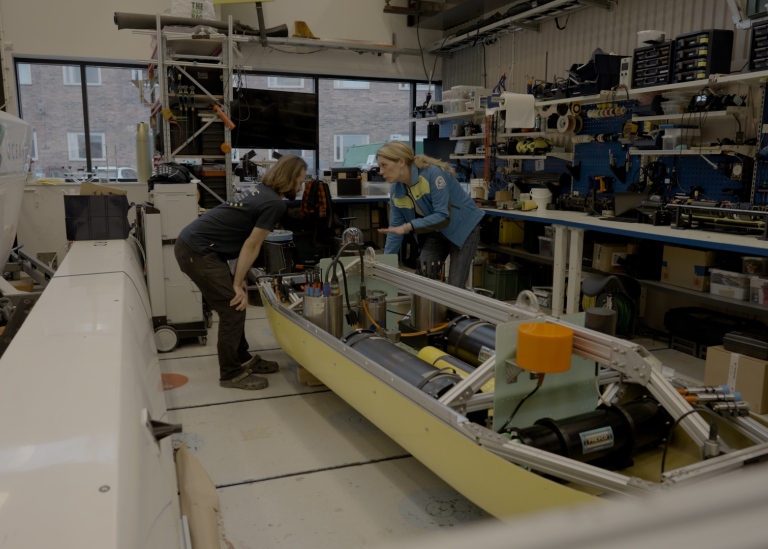Two researchers from the University of Stockholm lead expedition to study melting glaciers

Forty researchers from ten universities and research institutes in Sweden, the USA, Denmark, Australia and Switzerland are on board for this study. Taking into consideration that the ice situation can be very difficult in northern Greenland and the adjacent Arctic Ocean, the expedition needs several alternative routes. The primary geographical focus region of the North of Greenland 2024 expedition is the C.H. Ostenfeld Glacier, which drains into Victoria Fjord and has almost completely lost its floating so-called ice tongue after it began to break in 2002.
The focus of the expedition is on investigating how much and how fast the ice sheet in North Greenland can contribute to the global sea-level rise. Knowledge is currently unsatisfactory about what happens when glaciers meet the sea and become seawater through melting. It is important to know in more detail how these processes are going and at what speed, mainly in order to be able to develop scenarios for how much the global sea level will rise in a warmer climate. This knowledge is also important for climate models.

This is the third expedition with Oden to northern Greenland and is part of the larger research theme GEOEO, where questions about the processes that affect glaciers' interaction with the sea are at the centre. Martin Jakobsson has led the two previous expeditions, Petermann 2015 and Ryder 2019, together with American colleagues:
The two previous expeditions have been very successful, but far from without challenges. During the Ryder 2019 expedition, we were the first ship ever to enter the Sherard Osborn Fjord where Ryder Glaciers reach the sea. Our mapping of the seabed showed that there is a shallower area in front of the glacier's current location inside the fjord. Our oceanographic measurements show that this shallow area blocks some warmer seawater from reaching the glacier and melting it from below. This may be a main explanation for why the Ryder Glacier has not lost as much as the nearby Petermann Glacier in recent decades. This is the type of information we need to be able to improve our projections of the development of the Greenland ice sheet in a warmer climate and thus the contribution to global sea level rise", says Martin Jakobsson.
Going deep
Nina Kirchner's research on board Oden is focused on glacier tongues located along the coast of northern Greenland, such as the Petermann and Ryder Glaciers - the targets of previous expeditions, and the C.H. Ostenfeld Glacier that is the focus of GEOEO. On board Oden, Nina Kirchner has instruments and vehicles that will help examine and visualise the parts of the glacier that are usually hidden from the human eye, or are too dangerous to study up close. These are the outermost edge of the glacier tongue towards the fjord, and where large icebergs can break off (so-called calving of icebergs), the part of the glacier tongue that is below the surface of the water, and the water pocket that is between the seabed and the last pieces of the glacier tongue.

An autonomous underwater vehicle, developed at KTH Royal Institute of Technology, will go under the ice tongue to carry out unique measurements in an environment that is otherwise completely inaccessible. At the same time, the thickness and internal structure of the ice tongue will be examined using an ice radar mounted on a helicopter. All these measurements will be of great importance in the context of numerical models. It is another way to make the inaccessible available, and the only way to forecast future sea-level rise.
The final preparations and tests for the expedition are in full swing. I am very much looking forward to the expedition itself starting! If nothing unforeseen happens to all the instruments, sensors and vehicles, we will come home with unique data from an area that can be seen as a key area for the stability of the North Greenland Ice Sheet, and that is fantastic. But that's not the end, because then we start to feed this data into numerical models, which can then provide better forecasts of future sea level rise", says Nina Kirchner.
In addition to research on board Oden and in the sea around the icebreaker, a research group led by palaeogeneticist Love Dalén at Stockholm University will collect samples of plants and animal bones and teeth on land, lakes and the sea. The researchers will analyse DNA, to see how historical climate change, especially the end of the last ice age, affected the ecosystems and the distribution of flora and fauna in Greenland. As in the light of the ongoing global warming, it is likely that these changes for flora and fauna will be repeated in Greenland, and then historical data are valuable.
